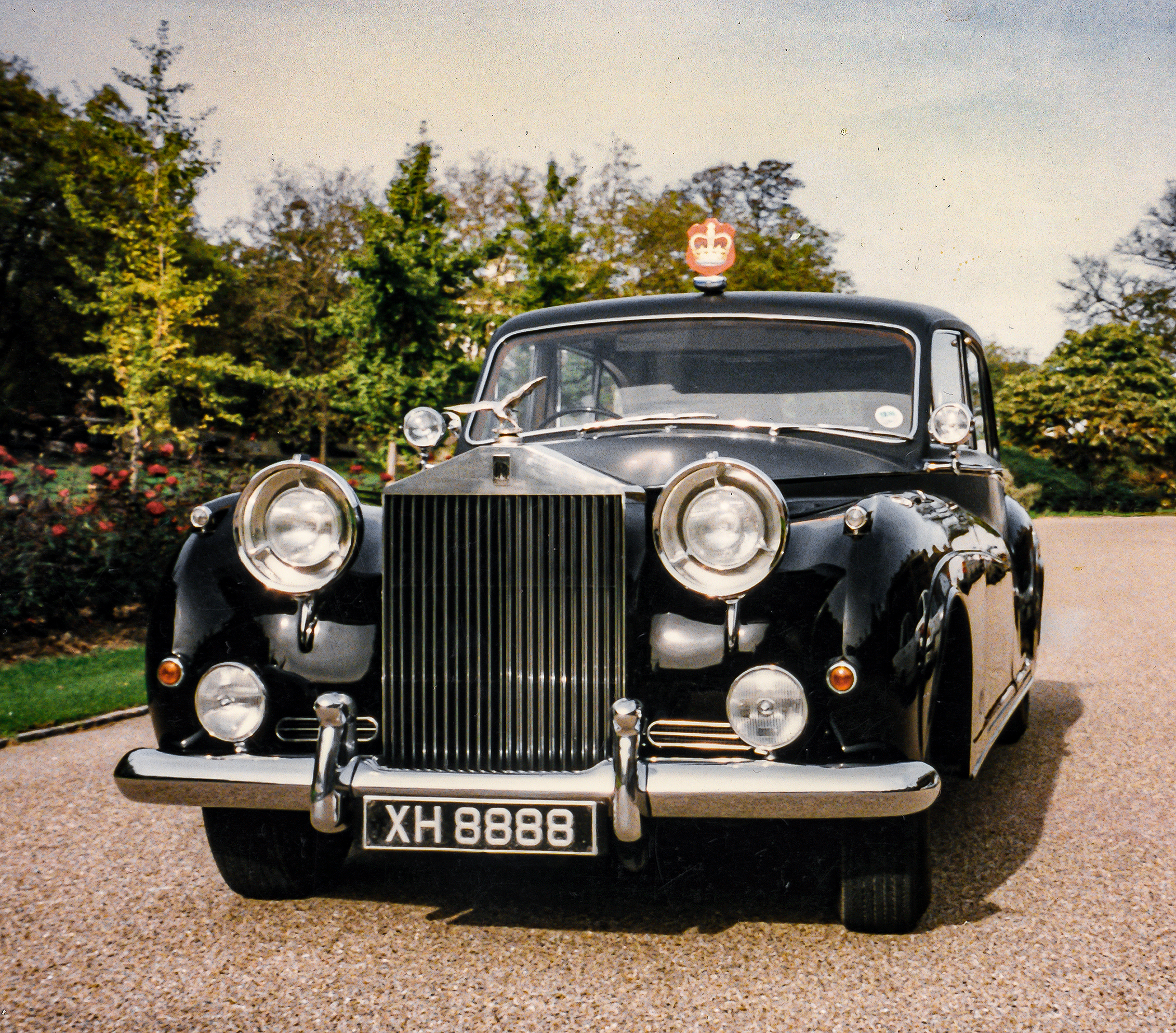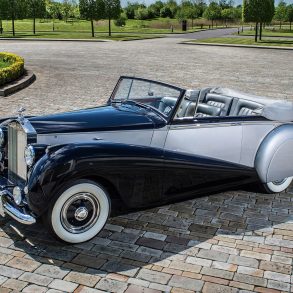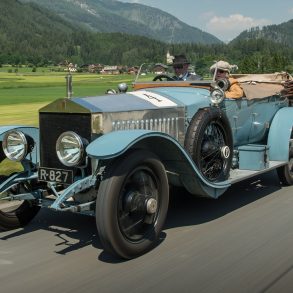Rolls-Royce has always offered countless opportunities to push boundaries, challenge the norm, and to redefine what’s possible. The desire for self-expression is one of the primary reasons that clients keep coming back to the marque.
The Rolls-Royce Black Badge series of motor cars brings this to a whole new level. Since the marque’s inception, the history of Rolls-Royce is filled with examples of individualism, iconoclasm, and even outright rebellion that continues to shape and form the marque and what they offer to their clients.
Despite the contrasting backgrounds of the company’s founders, they were both able to successfully challenge the norms and conventions of their time and were successfully able to overcome mediocrity.
Henry Royce faced a lot of initial challenges in life: poverty, deprivation, and lack of formal education. He was able to overcome all those challenges, became a renowned engineer, and eventually created ‘the best cars in the world’. He was eventually knighted for his achievements.
On the other hand, The Hon. Charles Stewart Rolls was born an aristocrat and studied in Cambridge. It wouldn’t have been surprising if he lived a life of ease and privilege, and it was expected of him at the time. His interest in engines, with early motor racing and aviation, however, led him to become a pioneer in both.
In modern times, they would be called ‘disruptors’, visionaries that change the world by daring to do things no one else would. It is not a surprise that with their innovative and rebellious nature, the marque has always attracted clients with the same nature.
In 2016, Rolls-Royce motor cars launched the Black Badge family. It was the epitome of the company’s individualism, creativity, self-expression, and iconoclasm. There is practically an unlimited number of options that the clients can choose in terms of exterior finishes. Despite the unlimited options, however, one color has always stood out for clients in terms of allure and strength: Black.
Black has always been seen as intense and substantial. It exudes power, strength, and authority and it also means elegance and confidence.
In the marque’s long history, there has been a lot of notable, bespoke Rolls-Royce motor cars that was given a black finish. The three examples have made their mark in the marque’s history, clearly showing how the owner completely owned and personalized an all-black theme.

1933 – Phantom II Continental (94MY)
In 1930, designer Ivan Evernden designed an experimental Phantom II Continental at the personal request of Henry Royce. It was made specifically for long-distance Continental touring. It was given a short chassis matched with close-coupled four-seat saloon body and named 26EX. For optimum weight distribution, it had two spare wheels placed vertically at the back of the luggage compartment. Barker & Co made the coachwork placed on a subframe that was made to cope with sustained high speeds, and powerful braking forces.
Evernden and Don Carlos de Salamanca took the car on its first outing to a concours d’elegance in Biarritz where it claimed the Grand Prix d’Honneur. After this victory, Rolls-Royce launched a ‘series’ model using the same mechanical features and overall coachwork dimensions as the 26EX. This gave the coachbuilders and owners freedom to accommodate their own design tastes.
The 94MY is one of the first cars. It was built in 1933 for Mr. Samuel Coxhill and was given an ‘Owen Fixed Head Coupe’ bodywork, made by London coachbuilder Gurney Nutting. It was given flush-fitting direction-indicators behind the side windows, twin windscreen wipers, and adjustable front bucket seats, which, at the time, were very unusual. The upgrades were made to give a more relaxed, long-distance Continental touring.

“It is the criterion of a good car that one can drive it the whole day long and at the end feel fresh and relaxed enough to enjoy dinner,” shared designer Ivan Evernden.
At the time, most of the Rolls-Royce coachwork had a limited finish of either black, very dark shades of maroon or blue. The 94MY was ordered with a black finish matched with “special brown leather, piped in light brown, carpets and headlining to tone, and woodwork to be highly polished veneers.”
This 1930s Rolls-Royce embodies the spirit of today’s Black Badge, bringing together luxurious comfort, high performance, and a personalized finish.

1960 – Phantom V (5AT30)
In 1959, the Phantom V was launched to replace the Silver Wraith. It was a much larger car which was really intended for chauffeur-driven use with almost all of them given a limousine design. Almost all of them were also given a black finish and were used for formal occasions. Members of the elite also got the Phantom V for private use.
One of the few that didn’t conform to the norm is the 5AT30. It was delivered in September 1960 to the third son of King George V and Queen Mary and HM Queen Elizabeth II’s uncle, HRH The Duke of Gloucester. They used the PV15 design by coachbuilder James Young as the basis for the body, making it arguably the most elegant Phantom V chassis.
His Royal Highness knew exactly what he wanted with his Phantom V. He ordered a paint combination to have matte black on the horizontal surfaces while the vertical planes were given gloss black finishes. Other personalized parts include large foglamps, backlight that are smaller than standard, sliding shutters for the rear windows, door-mounted driving mirrors, and two Stephane Grebel spotlights. Instead of the typical faired-in headlights, it was replaced by the prominent Lucas R100 headlamps.

His Royal Highness replaced the Spirit of Ecstasy mascot with his very own eagle in flight mascot. It is also interesting to note that probably for the first time in the marque’s history, the chassis card for the car showed that it was supplied with ‘an umbrella in holder’, a feature that is standard in the Rolls-Royce motor cars today.
On January 30, 1965, the Duke and Duchess were on their way home from Sir Winston Churchill’s funeral when they skidded off the road into a shallow embankment with the car turning over three times before it landed on its roof. Thankfully, none of the occupants were seriously injured. It was also a testament to the great coachwork of James Young that the 5AT30 was rebuilt and it continued to serve its owner for many more years.

1965 – Phantom V (5VD73)
In 1964, A Hard Day’s Night by The Beatles took the world by storm. As a gift to himself, in December of the same year, John Lennon ordered a brand-new Rolls-Royce Phantom V from R. S. Mead of Maidenhead. Unsurprisingly, the specifications for the car were very unique.
Lennon not only wanted a black car, but he wanted everything to be black inside and out. He even specified that the parts that were typically chrome or stainless steel, should also be black.
Mulliner Park Ward was assigned to create the car and they were supplied with all-black gloss paintwork, which includes the bumpers and wheel discs. At the marque’s insistence, the iconic Pantheon grille and the Spirit of Ecstasy mascot were the only ones in the car that was able to keep their original chrome finish.
Lennon’s car was also one of the first cars in Britain to be given blacked-out windows. They used darkened, reflective Triplex Deeplight glass. It was ¾-inch thick in the rear quarterlights, backlite, and division glass, and 3/16-inch thick in the rear doors. The darkened windows were not done for privacy, at least not completely.
In an interview with Rolling Stone back in 1965, Lennon shared, “People think they’ve got black windows to hide. It’s partly that, but it’s also for when you’re coming home late. If it’s daylight when you’re coming home, it’s still dark inside the car – you just shut all the windows and you’re still in the club.”

The interior of the car had black Bedford cord cloth as well as black nylon rugs in the rear compartment, and black leather was used in the front. It came with a seven-piece set of black fitted luggage, electrical aerials for a radio, and a Perdio Portarma television set. It was also said that the car was also given a record player, fridge, radio telephone, writing table, and red mood-lighting. Although all these features were never proven and could have easily been later additions to the car. It is also claimed that the rear seat could be converted into a pull-out bed.
The bold and unconventional choices are very much consistent with Lennon being one of the greatest cultural innovators in the 20th Century. Aside from changing the face of popular music, the is also known for being one of the first non-athletes to use trainers as footwear outside of sporting grounds. In a photo taken in 1967, it showed Lennon wearing what looks like an Adidas Stan Smith tennis shoes, and it has stayed as one of the most desirable designs for more than fifty years afterwards.
The car was later repainted to have vivid psychedelic electric yellow filled with flowers, Romany scrolls, and signs of the zodiac. It’s a completely unique example, very similar to its creative owner, and it also had its share of controversy, making it a perfect example of the Black Badge spirit.
The unquenchable spirit is still being expressed in new and innovative ways through the ever-changing Rolls-Royce Black Badge family.









